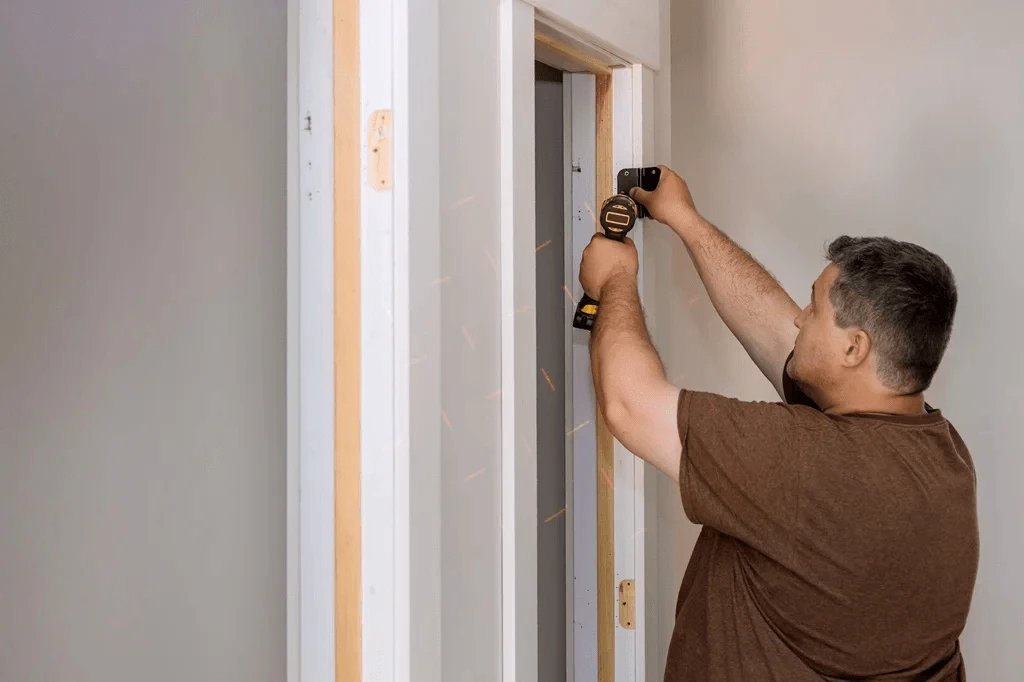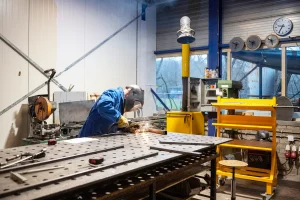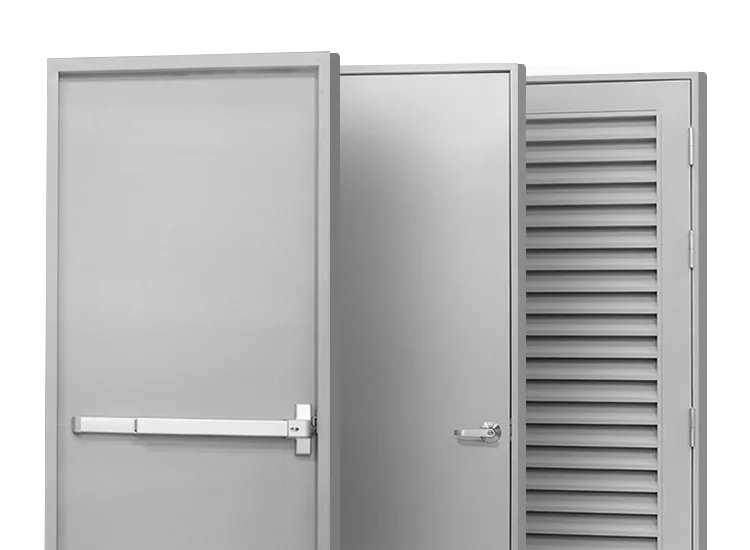The door jamb is a crucial yet often underestimated component of any doorway. Beyond its role in housing the door and hinges, it plays a pivotal part in home security and insulation. Having said that, knowing this part of the door’s significance is essential in helping you make choices that improve your living area’s appearance and use.
In this blog post, we will look at door jambs, their different types, and key functions to better understand how these components contribute to your home’s security and aesthetics. Read on to learn more!
What is a Door Jamb?
Often mistaken for the door frame, the door jamb is a key component of a door frame. It comprises two vertical parts that surround the doors on either side. Its primary purpose is to provide stability and structural support in the assembly of a door.
Aside from giving support, jambs also ensure that the door opens and closes properly while remaining aligned within the frame and preventing sagging or misalignment over time. They also increase the overall security of the doorway by holding the door in place and helping locking mechanisms operate efficiently. But what’s the difference between a door jamb and a door frame?
Door Jamb vs Door Frame
Though they are sometimes used interchangeably, the terms “door jamb” and “door frame” refer to different parts of the door structure. The frame refers to the whole structure that surrounds the door, including the header, threshold, and jambs; and it is installed into the wall opening. On the other hand, the jamb is the vertical portion of the door frame that runs along the sides of the door, holding the hinges and latch.
So, in simple terms, the door frame is the entire assembly that holds the door in place, whereas the door jamb is only one part of it.
Functions of a Door Jamb
The primary function of the door jamb is to support the door’s movement, whether it swings, slides, or hinges. But, in addition to ensuring that the door performs smoothly and correctly, it also guarantees the overall performance, security, and stability of a door within a building structure.
Here’s a rundown of its functions below.
1. The door jamb provides structural support to the door frame.
It helps hold the door in place and ensures that it opens and closes properly. By being securely attached to the surrounding wall, the door jamb helps maintain the integrity and alignment of the door.
2. It maintains the alignment and stability of the door.
A door jamb ensures that the door remains aligned and stable within the frame. It usually keeps the door straight and balanced, preventing it from sagging or becoming misaligned over time.
3. Door jambs also play a significant role in the door’s security.
By firmly securing the door frame, door jambs also ensure that the door cannot be easily forced open, providing resistance against break-ins and unauthorized access.
4. It helps with weatherproofing and insulation.
Door jambs often include weatherstripping, which seals gaps between the door and the frame, preventing drafts, moisture, and insects from entering. Consistently regulating the indoor temperature and lowering heating and cooling costs can lead to energy efficiency.
5. Lastly, it contributes to the aesthetic appeal of a door frame.
Door jambs are available in various materials, styles, and finishes, allowing for building owners to match the decor of a room or building. A well-chosen door jamb can also enhance the visual appeal of the doorway and the overall interior design.

Types of Door Jambs
Door jambs come in a variety of designs to accommodate a range of requirements and tastes. Here are two of the most popular ones to get you started:
Rabbeted Jambs
A rabbeted jamb is a door frame with grooves on its vertical sides, designed to seal doors tightly for improved insulation and draft reduction. It gives doors a neater look by hiding gaps between the door and frame, making it ideal for exterior use where weatherproofing is crucial.
Flat Jambs
Flat jambs are the plain vertical surfaces of a door frame where hinges are mounted. Unlike other types like split or rabbeted jambs, flat jambs lack decorative molding. It is common in interior doors for a clean, modern look, as they prioritize aesthetics over weatherproofing.
What are Door Jambs Usually Made of?
There are several materials used in the construction of door jambs, each with unique characteristics that serve different purposes and applications. Let’s explore some popular options:
Wood
- Solid Wood: A timeless classic material that is renowned for their sturdy strength and natural beauty. solid wood is ideal for bringing coziness and elegance into any house.
- Engineered Wood: It includes materials such as medium-density fiberboard (MDF) or plywood, that are economical, dependable, and warp-resistant. This makes them a wise choice for a variety of applications.
Metal
- Steel: Admired for its strength and durability, steel is an excellent material for jambs in business settings or locations where security is important.
- Aluminum: A lightweight and corrosion-resistant material, perfect for contemporary designs that need a touch of sophistication.
Composite Materials
- Fiberglass: This material offers durability and low maintenance, suitable for various climates.
- Vinyl: Known for its affordability and resistance to moisture, vinyl is an ideal jamb material for home in humid environments.

Why Choose Steel Door Jambs for Your Homes
Steel door jambs are an extremely reliable option for homeowners wanting to improve the security and longevity of their homes. Their sturdy design provides a strong foundation for door frames and outperforms traditional materials such as wood or fiberglass. Beyond these qualities, choosing steel door jambs offers several distinct advantages. These include the following:
Steel door jambs are highly durable and resistant to damage.
Compared to traditional wooden jambs, steel door jambs provide more enhanced security because they are more difficult to break through. This durability makes them particularly suitable for exterior doors, where security is a priority.
They are resistant to various weather conditions.
Unlike wooden jambs that can warp or rot over time, steel remains stable and maintains its structural integrity even in different weather conditions such as rain, humidity, and temperature changes. This resistance helps prolong the life of the door frame and ensures consistent performance.
Maintaining steel door jambs is relatively easy compared to other materials.
Steel door jambs do not require regular painting or sealing to protect against the elements. Cleaning this type of door jamb is very easy, usually requiring just soap and water to remove dirt and debris.
Steel door jambs offer superior fire resistance compared to wood.
When it comes to fire protection, steel door jambs have features that can improve your home’s safety. It can act as a shield against heat and flames, which may help contain a fire and slow its progress during an emergency.
They offer flexibility in design options.
Steel door jambs come in various designs and finishes, allowing homeowners to choose options that complement their home’s aesthetic.
They provide long-term cost benefits.
While initially more expensive than wooden jambs, steel door jambs offer long-term cost savings due to their durability and low maintenance requirements. They are less prone to damage and replacement, reducing the need for frequent repairs over time.

Ensure the Stability of Your Door with Our Quality Door Jambs!
Balancing aesthetics, durability, and quality is critical when selecting the correct door jamb for your construction or home improvement project. But don’t worry, because Janus Steel has all of these factors. So, whether you want increased security, aesthetic appeal, or long-term performance, Janus Steel is an excellent choice for both residential and commercial projects.
Contact us now or visit our website to browse our large door collection to find the ideal fit for your home!





